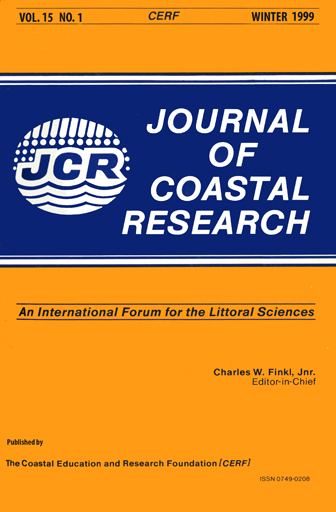Ripple Migration and Sand Transport Under Quasi-Orthogonal Combined Flows on the Scotian Shelf
Keywords:
Sand transfer, ripple migration, combined flows threshold.Abstract
Bed state, ripple migration and bedform transport of fine sand (D50 = 0.23 mm) were recorded with time-lapse photography for 12 days in 22 m of water on Sable Island Bank, the Scotian Shelf. Canada. Near-bed wave and steady flows were recorded and correlated with observed bed state and ripple migration. A well-defined threshold for the traction of fine sand under largely orthogonal combined flows is apparent in our data. It is defined by the expression (-)cb' = [(-)w' + (-)c’] = 0.04. The value is 20% less than the threshold criterion defined by GRANT and MADSEN (1979) for wave-dominant flows and extends it to the current dominant flow conditions when flows are orthogonal to each other. In addition, a threshold for saltation/suspension under combined flows is defined by the expression (-)cb’= [(-)w’ + 1.5(-)c] + 0.17. This threshold marks the onset of saltation and grain bypassing of ripple lee faces and approximates closely the breakoff Shields parameter (-)br’ = 0.16) of GRANT and MADSEN (1982). Bedform transport measurements are applicable only below this point; termed the equilibrium range by GRANT and MADSEN (1982). The sediment transport model SEDTRANS matched the duration and magnitude of sand transport over a wide range of conditions of combined flow. This was achieved by using the method of GRANT and MADSEN (1979), but minimizing the friction factor (fcw’) to 0.006. This value equals the pure unidirectional flow drag coefficient of SOULSBY (1983).


